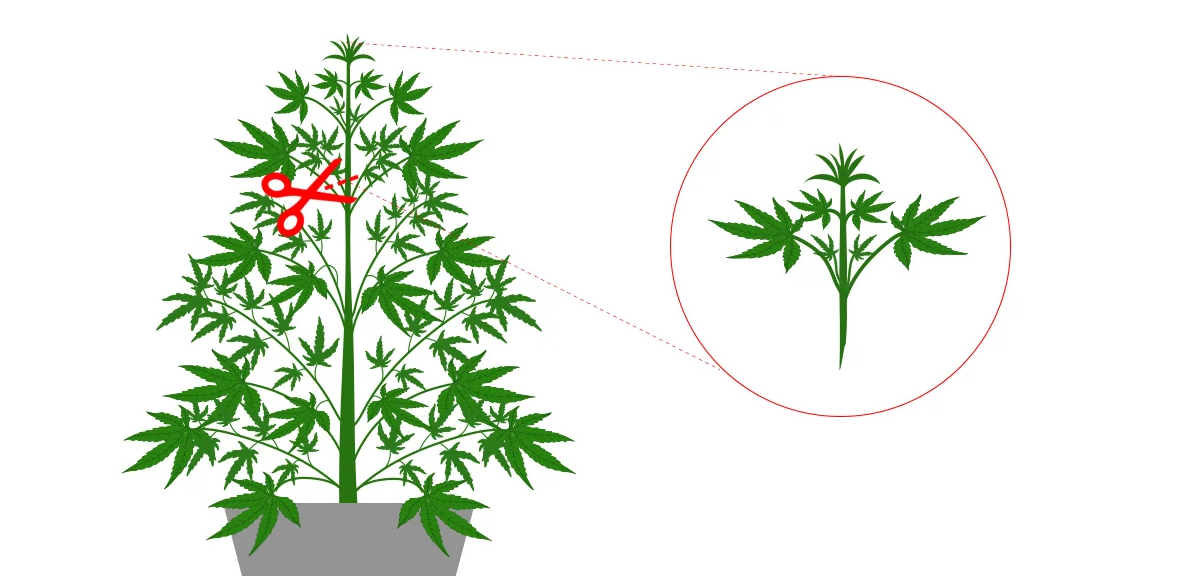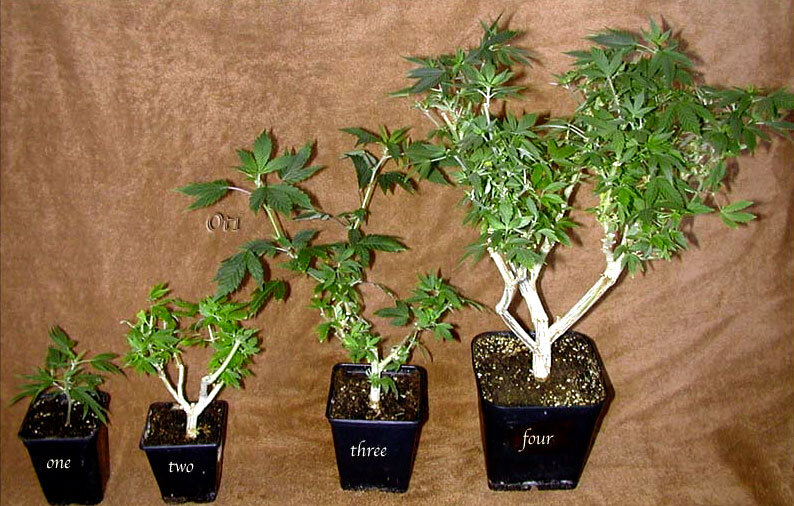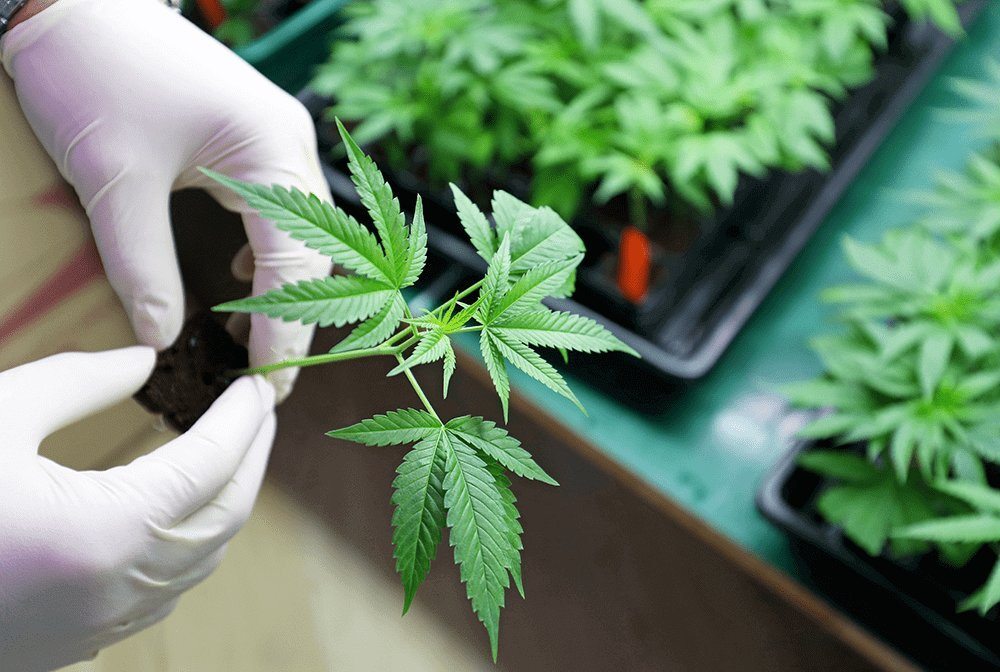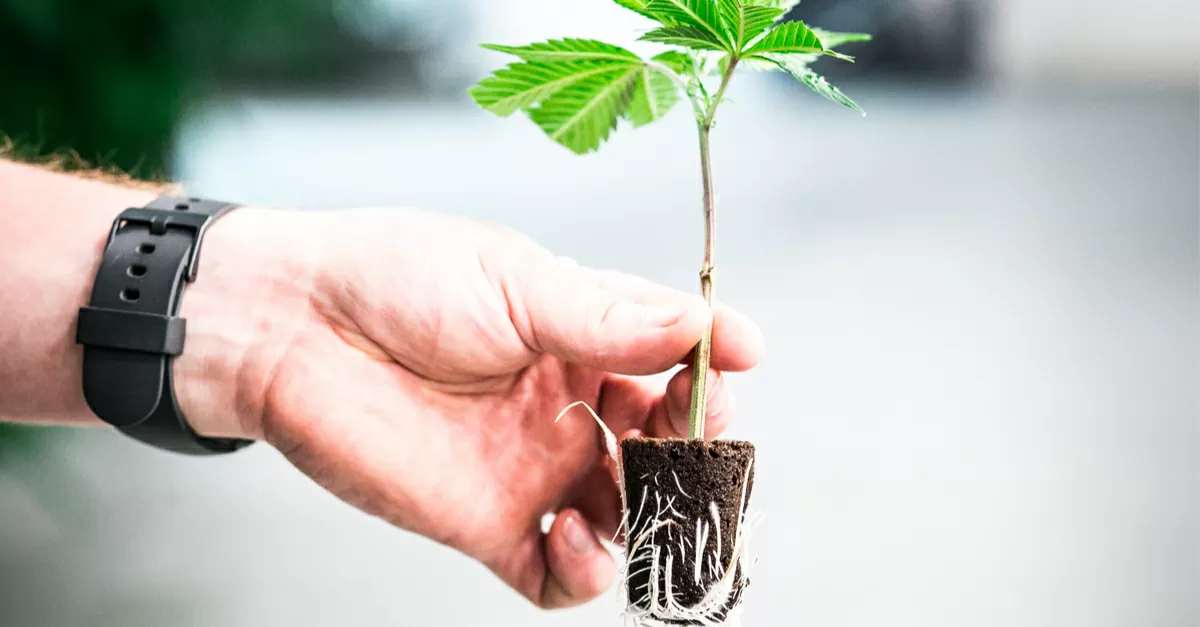Creating new plants from your favourite genetics or most characteristic phenotypes is extremely easy and fun, takes up little space and can become an art. In this article we will look at how to create and maintain mother plants in order to get good marijuana cutting.
Making a mother plant is something very simple, it will help us to keep two plants genetically identical by choosing the type of plant we like so much, or some specific phenotype we do not want to lose.
The production of cuttings will vary depending on the care we give to each plant.
It can be relatively easy to get dozens of cuttings if we make selective pruning during their growth, trying to branch the plant as much as possible and thus increase the number of available branches.
The most important point when producing a mother plant is to control the light period.
By keeping 18 hours of light and 6 hours of darkness or directly 24 hours of continuous light, we will prevent the plant from flowering.
Depending on the size of the mother plant we will use more or less lumens. To give an example: a mother plant in a three-litre container can be perfectly maintained under a low-energy bulb of ten or fifteen watts.
When we want to increase the speed of growth, all we have to do is increase the number of watts, which will give the plant more lumens and stimulate its growth.
The number of cuttings we obtain from each mother plant will vary depending on the size of the plant and the selective pruning we have carried out.
So if we want a plant that will provide many cuttings, we will try to keep it in a container of more or less five or seven litres, with good lighting and good pruning.
If on the other hand we just want to keep the genetics to take a couple of cuttings, a small container and minimal lighting will suffice, without the need for any special pruning.
We can even make bonsai mothers to take up as little space as possible.
If every time we cut a branch we leave a node below the cut, two new branches will emerge. If after cutting these new branches we leave another node below the cut we will get four new branches, thus ensuring a continuous production of new branches and constantly increasing the number of them.
This is why pruning well while we are forming our mother plant will guarantee us a good number of cuttings.
Depending on the final size we want for our mother plant, we will use a container of greater or lesser capacity, as is usual in medium-sized indoor mother plants of around three to five litres.
Mother plants to take cuttings from

When the mother plant has completely colonised the container, it is worth pruning the roots to prevent it from flowering. In medium-sized containers this usually occurs every 3-4 months and it will be sufficient to mow the bottom of the root ball and a little of the side roots of the root ball, taking care not to cut the base of the plant.
By pruning we can replace a large part of the substrate with a new one rich in nitrogen, thus providing good nutrients and eliminating the old salt-saturated substrate.
Root pruning is obligatory if we want to keep our mother plants well, because when the plants colonise the whole container and run out of space to develop new roots, they tend to flower regardless of the light cycle they have.
Another point to bear in mind in order to keep mother plants in optimal conditions is to pay attention to temperature and humidity parameters.
Optimal indoor conditions are an average temperature of 24/26 degrees and a constant relative humidity of 60/70 per cent.
With the points mentioned so far and occasionally applying some natural precautions to avoid insect pests or fungus, we will have healthy and efficient mother plants.
If we start from a seed we will let the plant grow to have about four nodes, performing an apical pruning (cutting off the tip of the plant), thus stimulating the growth of lateral branches.
If we start from a developed cutting it will be sufficient to leave a couple of nodes before apical pruning. The difference between starting from seed or cutting is only the number of nodes to be left, because starting from seed we will leave the first two nodes completely and use the next two to shape our mother plant.
Once the branches have developed with about three or four nodes per branch, we will bend them and also apply apical pruning to stimulate the node branches and thus obtain a well-branched mother.
We will do the same with the lower node branches when they have developed well, as these tend to go a little slower. By bending the branches we will facilitate the absorption of lumens from the small buds of the nodes that are more attached to the stem, thus obtaining a homogeneous growth of all the branches.
As we commented earlier, when these new branches grow and we cut them to make cuttings, we will always leave at least one node under each cut, thus ensuring two new shoots per cut. As in everything, there are many ways to do the pruning that will determine the production of cuttings from our mother hemp plants.
How old should a mother plant be before cloning?

A cannabis plant must be at least two months old before it can be cloned. So the ideal is to take clones from mother plants that are two months old during the vegetative growth phase.
Cannabis clones from mother plants that are less than two months old can have negative consequences such as developing irregularly and slowing down the growth phase. In contrast, clones from flowering plants root much faster and take several weeks to return to their vegetative phase.
Cuttings, branch portions for perennials
Once we have seen how to create our mother plants, nothing beats seeing how we can take advantage of them by obtaining cuttings from them that will go into our next harvest.
With this we try to grow an already known variety without the need to start from cannabis seeds, thus saving a few euros and time, as the growth period is considerably shorter than growing from seed. We also guarantee extremely homogeneous phenotypes, as the woody cuttings are 99.9% identical in behaviour and production to the parent plants.
In order to obtain healthy and hydrated types of cuttings, we must water the plant we are going to cut at least four to five hours in advance, as it is convenient to have watered it abundantly the day before.
In this way, the cuttings we will use will be well hydrated and will better withstand the shock of starting to develop grow roots.
What Supplies Do I Need for Cloning? A mini greenhouse for root development

The cuttings should be placed in a clean and disinfected workspace to avoid bacteria that can damage our new cuttings.
We will need a cutter or scalpel, rooting hormones, a brush, a glass of water with the correct pH and our mother plant from which we will cut the branches to make cuttings. Also some substrate on which we will plant the new cuttings, and a mini greenhouse.
On the substrate or medium on which we root the new cuttings there are a multitude of options, such as the use of classic jiffis or rockwool. Depending on the medium we will also need to use different pH values and stimulators such as Clonex.
Fill the seedbed with a substrate dissolved in (light) nutrients and water it with a pH of between six and six with four.
It is not necessary to add any root stimulator. Once watered we will make holes with the help of the upper tip of the brush, thus facilitating the insertion of the freshly cut cuttings that we are going to plant.
Once we have prepared the medium in which to insert the cuttings, we will proceed to cut the branches of our mother marijuana plant by placing them in a glass of water to prevent the stem from being exposed to the air.
We must bear in mind that the branches we use to make cuttings must have at least three or four nodes, as we must at least bury one recommended node two, leaving one or two above the substrate.
The normal thing for plants with medium internode distances is to cut the branches at six to fifteen centimetres to make cuttings.
Once we have cut the young branch, with the help of the scalpel or cutter we will also cut the branch of the node that we leave in the soil (or the nodes) and the base of the stem at a 45 degree angle.
Cutting the base at that angle is to provide the maximum surface on which to apply the root hormones, which we will do with the help of the brush both of the base and of the node(s) we are going to bury.
Once we have applied the rooting hormones, which I always recommend in liquid form for their ease of use, we will position the branch in the seedbed using the holes we have previously prepared.
Once inserted, we press the substrate lightly around the stem so that it is in complete contact with the buried part.
When we have inserted all the branches that we want to root, we will place it inside an overwintering chamber to which we will spray water through the floor and walls once a day, without spraying directly on the leaves of the cuttings.
With this we will ensure high humidity inside the greenhouse during the first few days, as the branches do not yet have roots to hydrate, and so will have to do so through the leaves.
How long time should they stay in the mini-greenhouse?
Following these simple steps we should root all our cuttings in about 15 days.
We will leave the greenhouse completely closed for the first five days, thus maintaining a very high level of humidity. Then we will slowly open the door or lid of the greenhouse on the remaining days, gradually decreasing the humidity but without very sudden changes.
After two weeks and keeping the correct humidity parameters and a temperature around 26 degrees, we can observe the roots of the new cuttings, which are ready to be transplanted.
A very common mistake when taking cuttings is to put too much light on the greenhouse. For an average greenhouse of about fifty centimetres, a simple 20-watt bulb or fluorescent tubes will suffice.
When the cuttings have taken root we can increase the lighting without any problems.
The temperature is also very important, as the use of heated winter greenhouses is recommended, since if the temperature is too low or too high, the cuttings will not develop well or will simply die.
You can stay trained by growing Cannabis CBD from one of the certified seeds, where the same growing rules apply and it is legal!
 Italiano
Italiano Español
Español English
English Français
Français Deutsch
Deutsch
